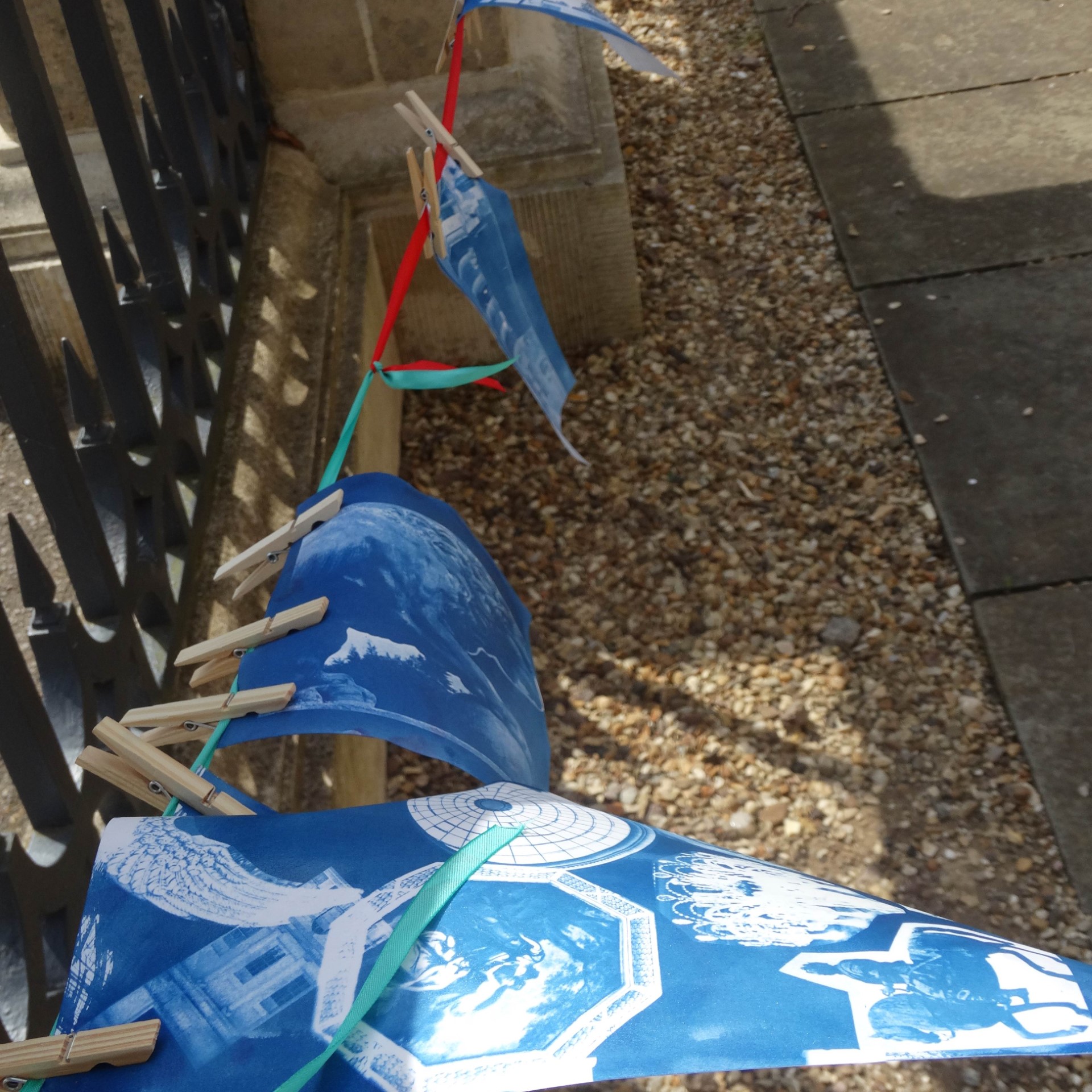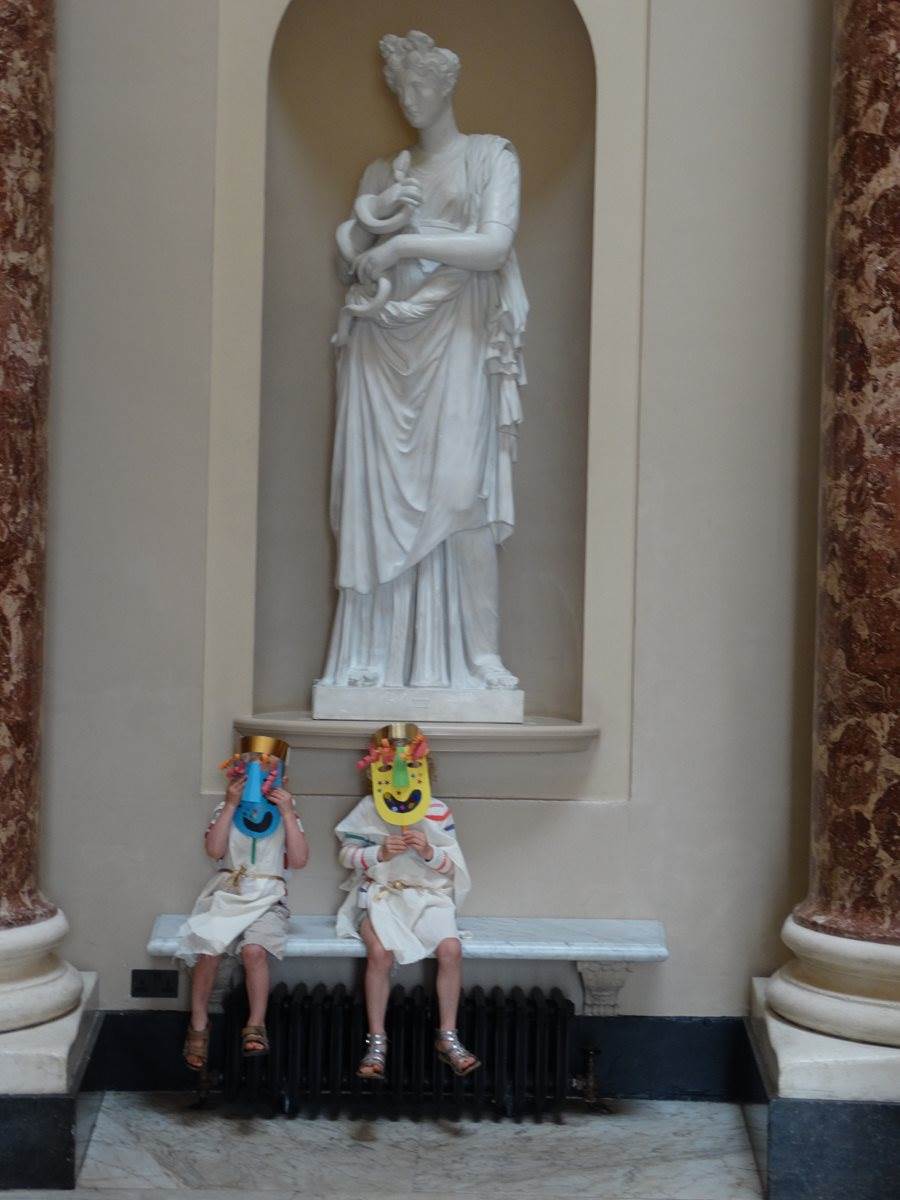Togas and Cyanotypes
25 August 2016

Community and Learning Intern Blog
This week’s Family Fun Tuesday was heralded by Alannah, Jess and I donning togas and learning to take photos without a camera. It was a bright, warm day as we welcomed families into the cool of North Hall to partake in the lead session, ‘It’s all Greek to Me.’

Much of Stowe’s architecture – the neoclassical colonnades and facades, for example – and interiors – the Marble Saloon and Music Room, to name just a couple – are heavily influenced by Romanticism’s obsession with classical culture. Stowe is full of nyads, dryads, satyrs, marble busts, statues of Senators and Goddesses and laurel crowns. On Tuesday, we attempted to bring these influences to life for a younger crowd.
In the sunshine on the South Front, Jess introduced the idea of the First Duke’s Grand Tour, and his love of collecting things from Greece and Rome. Then we listened to Alannah become Apollo as she read the story of Apollo and Pan’s musical duel, and a very satisfied seven year old placed donkey’s ears on my head (I was playing Midas).
We then played a few rounds of ‘Apollo’s Lyre’ – a version of ‘Granny’s Footsteps’ which involved attempting to steal a lyre from behind Apollo’s (Alannah’s) unsuspecting back. Then we learnt a bit about the various marble statues in the Marble Saloon – did you know that the word ‘Hygiene’ comes from the name of the Greek Goddess ‘Hygea,’ usually depicted holding a snake?
That afternoon was equally busy, as Stowe’s Learning Space hosted artist Molly Behagg for our weekly drop-in session. Molly taught us how to make Cyanotypes, a form of photography invented only 3 years after photography was officially discovered. The process is named after the colour of the paper when it is washed – cyan, or bright blue.
It involves washing paper in a chemical mixture, overlaying it with objects (such as leaves) or negatives of photographs, and then letting it sit in the sun. UV rays change the colour of the exposed chemicals, while the covered parts remain lighter. The paper is then washed twice in water to get rid of the harmful chemicals and to set the colours. The result is incredible, as it looks almost three-dimensional.
It was also the perfect activity to draw in families strolling in the garden, as we hung ours out to dry on the croquet lawn in front of the house. It was suitable for all ages, and just as satisfying and creative for adults as for children. Lesley was particularly enthusiastic, and created two enormous cyanotypes to display in the learning centre.
Thank you for reading! Come back next week for the final instalment of our internship, in which we make split-pin statues and install our own recording studio in the Music Room.
Fran